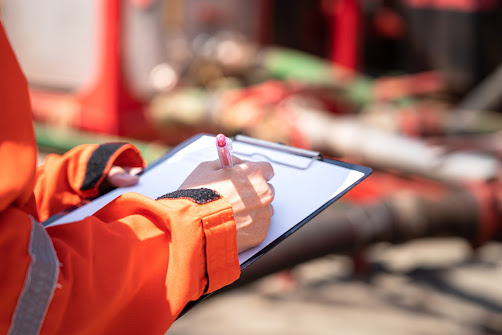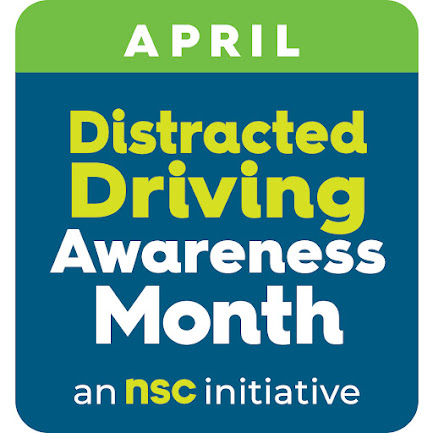The future of the broadband industry was on display at the 2025 TT&S Annual Conference & Vendor Showcase!
Taking place at The Bismarck Hotel from February 18-20, 2025, the event saw its second best attendance ever, including a small group from far outside our region.
Tuesday
The conference opened in the Bismarck Hotel's Missouri Ballroom with a pre-show product showcase for exhibitors to highlight who they are and/or the products they sell. Zyxel went beyond that with a short presentation to attendees about their company and products. They provide Wi-Fi, fiber, and other equipment and services to the broadband industry.
An announcement was also made during the opening about TT&S--we recently changed our name and logo. Telecom Training & Safety is now
Technical Training & Safety to better reflect the changes in the industry that we serve.
Kicking off the main event was our keynote speaker, Dr. William Aderholdt of Grand Farm, who explained how broadband is serving ag industry advancements. The detailed levels of technology that farmers can use to plan crops, spraying, and managing the soil require a lot of infrastructure, especially for large acreage farms, in terms of Wi-Fi, drones, sensors, and more. Advances in technology and our broadband services aid in food production around the world, and Grand Farm is implementing all the resources available. The future will require all that our industry has to offer!
From the opening presentations, attendees moved into the Dakota Ballroom for the vendor social. Not only were attendee numbers up, but our vendor room was full!
While visiting with exhibitors at their booths, attendees enjoyed free beer and snacks, and even some free drinks at the cash bar thanks to the social sponsors for the event: Ditch Witch of ND, ReadiTech Engineering, Precision Underground, Power & Tel, and MP Nexlevel.
 |
one night of door prizes
from TT&S and the vendors! |
Our third annual Tech Wars contest took place at the Tuesday vendor social with three 3-person teams competing in cat 5 termination, fiber splicing, and a time deduction bean bag toss. The winning team was from SRT Communications with second place going to BEK Communications and third place going to United Communications. Congratulations to the winners!
TT&S and its vendors also gave away many door prizes during each vendor social. The time was filled with calling out numbers and handing out prizes ranging from gift cards to sporting gear to appliances and electronics. (All winners must be present to win.) Half the prizes were given out during the Tuesday social, along with a BruMate cooler. The cooler drawing is based on filling out an exhibitor bingo card with stamps from vendors.
Wednesday
After a filling buffet breakfast Wednesday morning, attendees were off to the breakout sessions to learn something new to help them on the job. Sessions included soft skills like Excel and customer service and technical skills in fiber optics, Wi-Fi and networking, advanced locating, and even battery safety and AI.
While attendees were busy in breakout sessions in the Governors Room and Missouri Ballroom, TT&S hosted high school students from across the state for the Connecting the World: Introduction to the Broadband Services Industry Mini-Conference for Students in the Dakota Ballroom. Several TT&S member companies sponsored students and chaperones from their areas.
Students were introduced to networking by Andrew Walding, owner and instructor from
Cellstream, in his session "A Day in the Life of Your Internet Packets: How the Internet Works." Following that, a panel of TT&S member company HR Managers and technicians and two BSC telecommunications instructors answered questions and engaged the students with information about the broadband company workplaces, including training opportunities, wages, and benefits, and the company cultures.
At noon, everyone came together in the hotel Courtyard for a delicious hot meal featuring BBQ beef brisket and breaded chicken breast with sauces, vegetables, baked potatoes, salad, and a variety of pies and cheesecakes. While everyone enjoyed the meal, TT&S recognized special accomplishments by member company employees, particularly those who prove safe driving skills by reaching specific levels of miles driven without a serious accident.
Attendees finished out the afternoon breakout sessions with many returning presenters and new presenters. Some of our presenters were juggled to fit in the schedule in both the main conference and student mini-conference events, switching between afternoon or morning with students and regular attendee sessions.
Afternoon hands-on fiber optics stations for students were hosted by Steve Wolles of AFL, Sean Kelly of Light Brigade, Mike Lamb of OFS and Larry Robbert of PLP, and Andrew Degidio of Sumitomo Electric. This hands-on portion was mentioned in the February 28, 2025, BPS Community Newsletter promoting Career and Technical Education Month with a picture of Andrew from Sumitomo.
After a heavy day of learning, high school students had the option of a tour at Dakota Carrier Network before heading home while attendees wound down with drinks and snacks at the Wednesday vendor social. At the social, the last of the door prizes were given out, along with a Yeti cooler.
The third annual TT&S Cornhole Tournament also took place at the Wednesday social with the top three teams all going home with prizes. TT&S gave trophies and a set of boards and bags to each member of the winning team, The Ringers. The second place team, Master Blasters, took home trophies. However, since they were vendors who had wanted to get in on the fun, they left the prize for second place to go to a third place team. A third place play-off was held, and the bag sets went to the DCT team. Congratulations to all! We hope everyone had a fun time.
 |
Jane Wigen of NTCA
closes out the 2025 conference |
Thursday
The final day was a day to sit and relax a bit. After a hearty breakfast, the final two sessions took place. Special Agent Luke Kapella of the ND Bureau of Criminal Investigations presented his "Drug of Abuse" session. In that, he shared warning signs of illicit drug issues when going onto the premises of customers.
After Special Agent Kapella, one more speaker closed out the conference. For 2025, instead of holding her retirement planning overview as a breakout session with limited space, Jane Wigen, the NTCA rep for our region, was the closing speaker for all attendees with a very informative presentation on planning for a solid financial future and retirement.
The conference closed out as a success with many learning opportunities for attendees to improve their knowledge for their jobs, along with time to socialize over drinks and games.
We also enjoyed meeting students from across the state and giving them the opportunity to see what our industry does for the world. The future of our broadband is in the hands of young men and women like those who attended the student mini-conference. TT&S hopes the event inspired them to consider this important industry as a future career path. Maybe some day we'll see them attending the main conference as broadband company employees!
Thank you to everyone who contributed to the success of this event! We hope you'll join us again in 2026!













